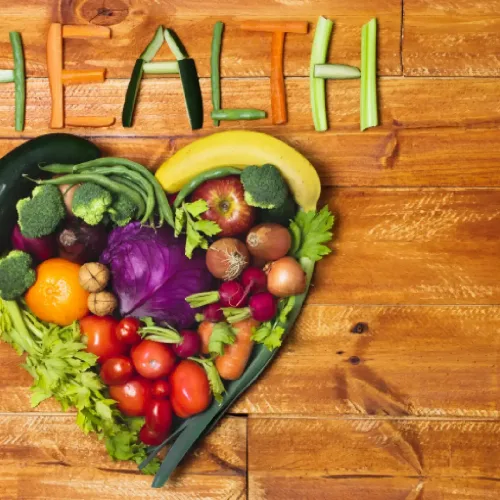Farming has to change quickly to keep up with a growing world that needs to protect the planet. Today, sustainable farming technologies are used to grow food that saves water, land, and energy for farmers. These tools make farms more efficient, reduce waste, and make our environment safer. Next up, we will tackle the most promising farming tech that is shaping up for 2024.
Breakthrough Technologies in Farming
1. Vertical Farming

Space for traditional farming is limited by urbanization. Vertical farming grows crops inside controlled environments on stacked layers to solve this problem. This method has less water use, requires no soil, and reduces transportation requirements by closer pairing farms to cities. Fresh, pesticide-free greens are already being delivered throughout urban centers around the world by companies like AeroFarms and Plenty.
- Why It Matters: Vertical farming saves up to 90% of the water used in traditional methods.
- Future Potential: By 2030, vertical farms may provide food security for urban areas while reducing dependence on long-distance supply chains.
2. Precision Tools for Agriculture
There is no need to rely on intuition anymore. Drones, GPS mapping, and soil sensors are all employed in precision agriculture, which uses fields in real time. We use these tools to help farmers save on water, fertilizer, and pesticide use and do it more efficiently.
- Example: Drones equipped with infrared cameras detect crop stress before it becomes visible, allowing farmers to act quickly.
- Impact: Farmers report increased yields and up to 40% savings on resources.
3. Smart Irrigation Systems
In a global problem of water scarcity, smart irrigation is just the answer. Measuring moisture levels in the soil using sensors, water is provided only when required by AI-powered systems. By preventing overwatering, it keeps your crops healthy in drought-prone areas, too.
Renewable Energy on Farms

Solar Power
Solar panels on farms do more than reduce electricity bills. They power everything from irrigation pumps to storage facilities, ensuring farms remain operational during power outages. In 2024, many farms are integrating floating solar panels on ponds, doubling their use of space.
Fun Fact: Solar-powered drip irrigation can save 60% more water compared to conventional systems.
Farm Waste
Animal manure and crop leftovers can now produce energy. Biogas systems convert waste into methane, which powers farm equipment or provides electricity. This not only reduces methane emissions but also creates an extra income stream for farmers.
Wind Energy
Small-scale wind turbines are being used on farms in windy areas. These systems are easy to install, and sufficient power can be generated to run daily operations. Not only that; many governments provide subsidies to encourage this eco-friendly practice.
Eco-Friendly Ways to Protect Crops
1. Organic Pest Control
Chemical pesticides are distasteful to the soil health and the water systems. Organic pest control avoids chemicals in controlling bugs. It employs natural predators like ladybugs. It also uses a natural solution to spray over the pests. Farmers are growing “cash crop traps” to protect their crops by keeping pests away. These crops act as a natural barrier, making it easier to manage pests.
2. Regenerative Farming
Regenerative farming is centered on improving the state of the soil. Practices like mulching, no-till, and the use of legumes lower input costs. Healthy soil absorbs carbon from the air. Better quality of soil leads to better quality crops. This improvement results in lesser harm to our environment by cutting down our carbon footprint.
Sustainable Farming Technologies

Agriculture in the present century is not just about producing food but producing food in the right way. Effective technologies in agriculture do more than make it possible to produce food. They also help in curbing the effects of negative impacts from other conventional farming processes. Implementing these technologies involves steep costs. However, the long-term gains outweigh these costs. Most governments actively subsidize such developments. Some organizations also support these efforts. They aim to expand options for more farmers.
Dairy farmers are not the only ones on this path. Organically grown products are the new trend. Consumers are actively seeking them in the market. This drives the market towards environmentally friendly products. You can even track a carrot from the farm it grew in. This is made possible through the use of blockchain, all the way to your plate.
“To forget how to dig the earth and to tend the soil is to forget ourselves.” — Mahatma Gandhi
Conclusion
Farming of the future is about innovation and sustainable farming technologies. From growing food on skyscrapers to using solar energy, technology is enabling farmers to produce more food using the fewest resources. Those developments are not petty trends, they are indispensable. The implemented technologies can be used by the agriculture industry to overcome the climate change impact. They also help reduce the natural resources use. Additionally, they meet the growing world demand for food. This means that as farmers adopt these tools, they are ensuring the future of the planet is green and healthy for all. The modern methods of farming are already out there, and they are not dumb; neither are they polluting, crude, nor time-wasting.
References
- Vertical Farming by AeroFarms
- Precision Agriculture Explained
- Renewable Energy for Farms
- Organic Pest Control Methods




